- Home
- Don Pendleton
Canadian Crisis Page 14
Canadian Crisis Read online
Page 14
“Uh—God, I dunno. Wait! Now wait! Give me time to lay it out! I—”
“I didn’t ask for a layout,” Bolan coldly reminded him. “It’s now or never, Jingo.”
“Hey, we never see the guy. God’s truth. He’s not one of us—that’s all I know.”
Bolan understood that but he wanted the guy to say it, flat and straight. “It’s a dumb time for double talk,” said the voice of death.
“I swear! He’s a contractor. From outside somewhere. Those soldier boys are his, not ours.”
“So what are you doing here, Jingo?”
“Advisors, that’s all. They needed someone to finger you. I didn’t ask for the crummy job, Bolan. I don’t even like the—listen, this guy is an operator. Read me?—an operator! He’s working for the million bucks head money plus full expenses. He’s got a whole fuckin’ army stashed around here somewheres. I mean all of it. Troops, weapons, vehicles. We call him the little general.”
It was all very interesting, much more than Bolan had expected to get. “What else do you call him, Jingo?”
“I swear I don’t know his name!”
The AutoMag came up to stare the guy squarely in the eyes. “Kiss it goodbye, then, Jingo.”
“Okay, okay,” Morelli sighed. “He’s got a code name. They call him Trooper. Now that’s the all of it, I swear. I never seen the guy. I don’t know nobody that did. The contact is always by telephone or radio. He’s got a secret base up here, somewhere. He runs everything from there.”
“So who was running this hit?”
“He was. By radio. I swear.”
Bolan’s numbers had run out. Already too much time had been spent here, at the edge of the death zone.
“Tell him I’ve come for him, Jingo. Tell him I got his message. Tell him.”
The guy could hardly believe his good fortune. Relief flooded the voice with emotion as he replied, “Sure, sure, I’ll tell ’im, Bolan.”
“Don’t move a muscle until I’m clear,” Bolan commanded.
He returned to the warwagon and went on, without lights, to the highway.
But the Executioner was not now “running hard” anywhere.
He pulled on across the highway and into thick brush, then returned to the roadway to erase any tracks or signs left there. Moments later, and long before the remnants of the “killer force” began their quiet withdrawal, all of the warwagon’s surveillance systems were fully operational—reading and waiting for directions to the next front.
The game had changed. There was now no clear distinction between the hunter and the hunted. And the entire “kill zone” was now noman’s-land.
3: COLD
A very bold mind was running that operation.
Sharply uniformed troops with MP armbands stood guard over the entrance to the battlefield while work parties and graves details picked the area clean of every evidence of combat. Large, flatbed semitrailers hauled away the gutted hulks and incidental pieces of the shattered troop carriers while field ambulances carted off the dead and broken bodies and medics provided first aid to the walking wounded. Even a wrecker showed up to tow away the remains of the armored Cadillac.
Bolan maintained his surveillance throughout that cleanup operation, recording the terse radio communiqués, photographing faces and equipment with infra-red techniques, monitoring personal conversations with his sensitive audio pick-ups.
And, yeah, it was quite an operation.
Too much, perhaps, for too little. Bolan simply could not believe that such a formidable force had been organized for the sole purpose of stopping the Executioner’s war.
There had to be more to it than that.
These guys were operating openly, brazenly—masquerading as a bona fide U.S. military force, utilizing restricted radio channels for their communications, riding around in “official” vehicles and arming themselves with modern weaponry from the U.S. arsenal—and the hell of it all was that they were pulling it off flawlessly. Observers from the Joint Chiefs of Staff would not have detected a suspicious anomaly.
All this … for one lone man?
The financial considerations alone were staggering. Even supposing that they’d managed to steal all the equipment, weapons, and ammunition, the day-to-day cost of maintaining such a force would be immense.
Dark suspicions were lurking at the threshold of the combat mind as Bolan tailed the last of the column away from there. The track led north and then west, deeper into the mountains in a torturous and winding ascent which seemed to be holding a general northwest focus. The final few miles were accomplished via a succession of narrow roads and back trails which culminated in a swift descent along a broad, freshly paved private road which dipped into an almost pastoral valley, high between snowcapped peaks.
Bolan had endeavored to maintain a track-plot, but he was not at all certain as to the precise geographic location of this “base.”
The air was very thin, and quite cold—rare enough to noticeably impair the efficiency of the warwagon’s engine. The stars had never seemed brighter, the sky closer.
Bolan broke off the track at the beginning of that final descent and pulled into cover at about two hundred yards above the base. A high chain-link fence was set behind barbed-wire escarpments. A large sign at the gate identified the enclosure only as “U.S. Government Property.” A pair of MP’s closed the gate behind the last vehicle of the column and returned to an All Terrain Vehicle which was parked at the approach, serving apparently as a guard house. Considerable activity was going on behind that fence—a lot of lights, vehicles whining around, a miscellany of muffled sounds. Apparently, though, the main area was nestled into the base of the mountain slope and at a right angle to Bolan’s line of sight; he could see nothing in the nature of buildings or organized human activity.
In preparation for an EVA, he stripped down to the blacksuit, briefly debated the mission requirements, then removed that also and put on a “life suit”—a lightweight jumpsuit which maintains body temperature within the comfort level. Over this he added the usual “light probe” gear—9mm Beretta Brigadier with silencer, a high-powered air pistol with tranquilizer darts, stiletto, nylon garrote, various gadgets. Then he applied a black cosmetic to face and hands and quietly invaded the night.
The temperature down on the plains had been in the mid-fifties; here, it was closer to the freezing mark. Occasional light patches of old snow created patchwork patterns on the landscape. Light sagebrush shared the dotted valley floor with a thin scattering of small pines. Erratic gusts of wind moaned fleetingly along the soft terrain and sometimes howled against the rocks, somewhere above.
Bolan blended with all that, became one with it, absorbing it while himself becoming absorbed by it as he moved off in a quiet reconnaissance.
He followed the fence line, at a distance of about fifty yards, pausing frequently to watch and listen, quiveringly alert to any suggestion of the presence of land mines, trip wires, and other silent security provisions. It was not a huge base. He covered the entire open perimeter area in less than twenty minutes, completing the “close recon,” then withdrew for a quicker transit along the base of the opposite slope, in an open reconnaissance of the entire valley.
Not large, no—but a hell of a neat setup.
The topography here seemed to suggest a moraine area—the melting point of some ancient glacier—with the secret base situated between a pair of lateral moraines with peculiar angles. The rear area was butted into the mountainside, two sides protected by the moraines, only the front boundary unobscured by natural terrain features. Because of the rise and angles of the land, the whole thing was shuttered from the view of casual passersby—probably even from above—except for a line of sight covering no more than fifteen degrees of arc.
They apparently felt pretty damn secure in there.
No guards were posted, except at the gate. The fence was electrified, though, and there was evidence to suggest that perhaps some sort of electronic alarm system was function
ing.
Bolan sat on a rock in the shadow of a scrubby pine and sketched the layout. Fifteen medium-sized quonset huts—each capable of housing, probably, twenty to thirty men, depending on how much they wanted to crowd it. Large motor pool area with plenty of rolling stock. A central, low-profile building—probably a mess and lounge area—now serving coffee and sandwiches to a subdued “killer force” who gathered in apathetic groups outside. Smaller building with an Alpine roof, set off from the other structures—headquarters, probably—brightly lighted inside, much bustling about. A small shack, off to the other side—infirmary, judging by the activities there. Couple of large metal warehouses, a miscellany of smaller storage sheds.
Nice setup, yeah.
Bolan completed the sketch and carefully put it away for safekeeping. Then he settled into a quiet vigil, eyes and ears alert to all the lifesigns in and about that incredible encampment in the Rockies. Two hours passed before the patient scout was satisfied that he “knew” the place—had its heartbeat, its rhythms, its very metabolism.
The facts, however, still did not compute. It was too damn much for much too little; Bolan simply could not buy this full-scale military operation as nothing more than a headhunting force. They’d gone for his head, sure—but there had to be more to it than that.
Jingo Morelli had tried to make it sound like a head force—He’s working for the million bucks head money plus full expenses—but he’d also referred to the top man as an “independent contractor,” a situation which could cover a variety of bold ideas.
“Full expenses,” for an operation such as this one, would make peanuts of the million-dollar bounty on Bolan’s head. Was the mob really financing the entire thing? Bolan’s dark suspicions would not leave him. Something was out of whack here.
Was it possible that the mob was playing footsy with some official government agency, a furtive agency, perhaps?
Possible, sure—anything was possible.
Lucky Luciano had been let out of prison by an official government agency, to run the New York docks during the scarey days of World War Two.
The mob and the CIA had gotten chummy in the face of Castro’s Cuba, and it was no secret that “the boys” had lately managed to forge friendships in the shadow of the White House itself.
No, nothing was impossible.
Bolan was preparing to break off the reconnaissance and return to the warwagon when another piece of the puzzle suddenly fell from the skies—literally. The unmistakable windmill sounds of a small helicopter froze him to the shadows, and he watched as the little bird dropped quickly from the peak behind him and settled into the compound. The angle of vision into the landing area was a bad one; Bolan had only a sensing of shadowy figures moving quickly about the grounded craft—whether embarking or debarking, he could not say—then the chopper was lifting away, with less than a minute on the ground.
The chopper itself held the most interest for Bolan.
It carried U.S. Army markings.
He made a thoughtful mental note of that as he began the withdrawal. It was a cold withdrawal—inside cold—as the most hunted man in America began to assimilate the full implications of his situation.
He knew that he had to face the possibilities squarely. Regardless of who was calling the shots, those “troops” down there could be U.S. Army soldiers. This could be a “friendly” force, subverted by those above them into the counter-war against Mack Bolan.
And, yes, it was a chilling thought.
Bolan had always made it a point to confine his war to the proper enemy. He had never shot it out with cops or other officials; he simply evaded them, the best way he could.
But, now …
Yes, it was a cold withdrawal for the Executioner. Already he had engaged this present “enemy” and left many dead upon the field of combat. And there was no way Bolan could rationalize an “error” of that magnitude.
No way.
If he was getting that sloppy—if his combat instincts had gone that sour—then it was time for the war to end.
How could he ever again trust himself with the death decision? An executioner’s “error” was noncorrectable.
Dammit—he had to know!
The troubled warrior cautiously circled to the access road and invested another ten quiet minutes in a study of the gate area. The all-terrain vehicle had not budged from its earlier position. The gate guard, two “soldiers” in white MP helmets, maintained their lonely vigil from inside the vehicle. Automatic weapons stood at the ready.
Bolan settled into the wait, patiently determined to find the truth about this place. The ten minutes seemed like hours, and he was ready for the “MP” who finally stepped down from the guard vehicle. The guy left his weapon on the seat, did a couple of quick deep knee bends, muttered something to his companion and lit a cigarette, then ambled into the sagebrush at the edge of the road.
It was the moment Bolan had been waiting for.
He moved swiftly then, along the blind side of the vehicle until he was about ten paces out, where he raised the air pistol and sent a stundart to the guy in the vehicle. The guy raised a hand to the back of his neck and quietly collapsed. That dart would very quickly dissolve. Within thirty minutes to an hour, depending on the guy, the drug itself would vanish entirely from the bloodstream. The guy would awaken as though from a normal nap and all the tests known to medical science would fail to reveal the cause of it all.
Bolan waited for the second man to return from his “head call”—then he soft-touched him, also, dropping the guy in mid-stride. He carried him to the vehicle and placed him on the seat beside the other one, then began the quick shakedown.
Both wore dog tags—official army ID tags. Bolan took impressions of each, using the pencil-and-paper technique for blocking-in the raised lettering. He found other useful information in pockets and wallets, making notes of these items. Finally he copied the serial numbers from the automatic weapons and from the vehicle itself.
When he returned to the warwagon a few minutes later, there was nothing left behind to suggest his visit. Those guys would awaken feeling just a bit groggy, perhaps a bit disoriented for a couple of minutes—and probably neither would admit to the other that he’d actually been asleep.
But as the warwagon quietly powered away from that cold zone, Bolan was now almost dead certain that he had made a horrendous error in judgment.
And the coldness went with him, seeping into his chest and burying itself there. They’d finally done it to him. They’d sucked him, set him up—and now, maybe, he was no different than they.
That was cold, yeah—bitter cold.
Buy Colorado Kill-Zone Now!
About the Author
Don Pendleton (1927–1995) was born in Little Rock, Arkansas. He served in the US Navy during World War II and the Korean War. His first short story was published in 1957, but it was not until 1967, at the age of forty, that he left his career as an aerospace engineer and turned to writing full time. After producing a number of science fiction and mystery novels, in 1969 Pendleton launched his first book in the Executioner saga: War Against the Mafia. The series, starring Vietnam veteran Mack Bolan, was so successful that it inspired a new American literary genre, and Pendleton became known as the father of action-adventure.
All rights reserved, including without limitation the right to reproduce this ebook or any portion thereof in any form or by any means, whether electronic or mechanical, now known or hereinafter invented, without the express written permission of the publisher.
This is a work of fiction. Names, characters, places, events, and incidents either are the product of the author’s imagination or are used fictitiously. Any resemblance to actual persons, living or dead, businesses, companies, events, or locales is entirely coincidental.
Copyright © 1975 by Pinnacle Books, Inc.
Cover design by Mauricio Diaz
ISBN: 978-1-4976-8576-5
This edition published in 2014 by Open Road Integ
rated Media, Inc.
345 Hudson Street
New York, NY 10014
www.openroadmedia.com
THE EXECUTIONER EBOOKS
FROM OPEN ROAD MEDIA
Available wherever ebooks are sold
Open Road Integrated Media is a digital publisher and multimedia content company. Open Road creates connections between authors and their audiences by marketing its ebooks through a new proprietary online platform, which uses premium video content and social media.
Videos, Archival Documents, and New Releases
Sign up for the Open Road Media newsletter and get news delivered straight to your inbox.
Sign up now at
www.openroadmedia.com/newsletters
FIND OUT MORE AT
WWW.OPENROADMEDIA.COM
FOLLOW US:
@openroadmedia and
Facebook.com/OpenRoadMedia

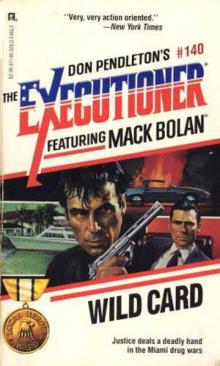 Wild Card
Wild Card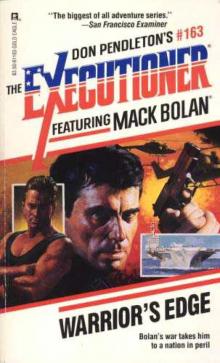 Warrior's Edge
Warrior's Edge Blood Vortex
Blood Vortex Lethal Vengeance
Lethal Vengeance Killing Kings
Killing Kings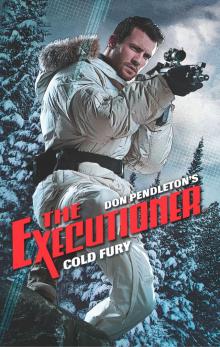 Cold Fury
Cold Fury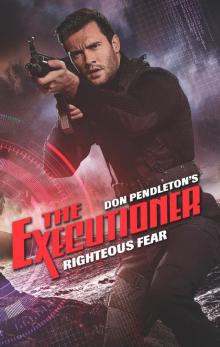 Righteous Fear
Righteous Fear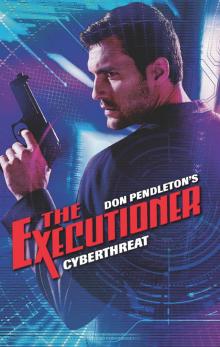 Cyberthreat
Cyberthreat Stealth Assassin
Stealth Assassin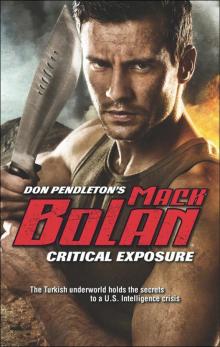 Critical Exposure
Critical Exposure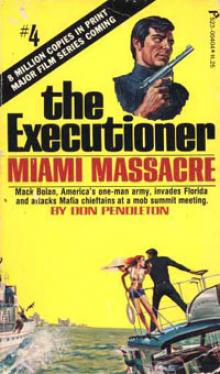 Miami Massacre te-4
Miami Massacre te-4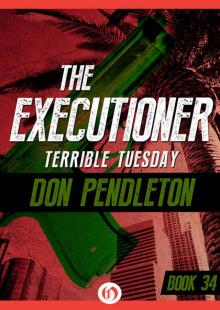 Terrible Tuesday
Terrible Tuesday Dying Art
Dying Art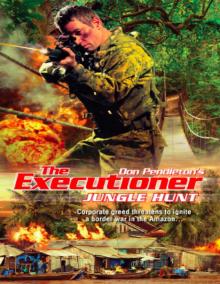 Jungle Hunt
Jungle Hunt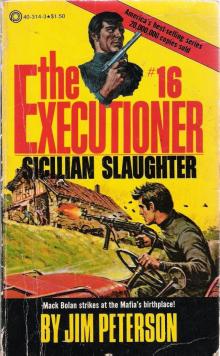 Sicilian Slaughter
Sicilian Slaughter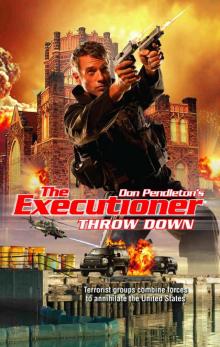 Throw Down
Throw Down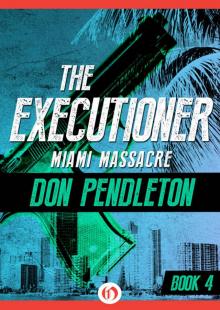 Miami Massacre
Miami Massacre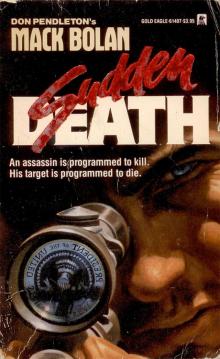 Sudden Death
Sudden Death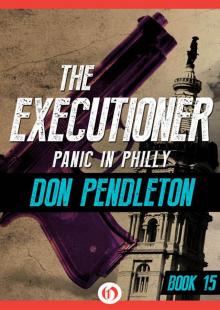 Panic in Philly
Panic in Philly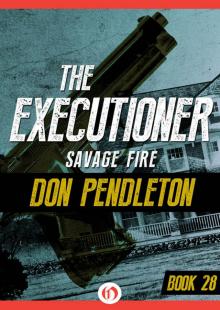 Savage Fire
Savage Fire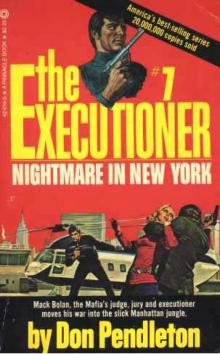 Nightmare in New York te-7
Nightmare in New York te-7 Omega Cult
Omega Cult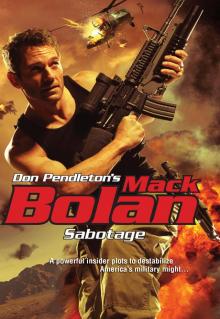 Sabotage
Sabotage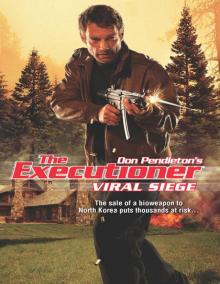 Viral Siege
Viral Siege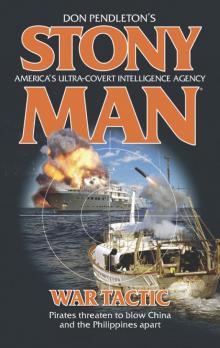 War Tactic
War Tactic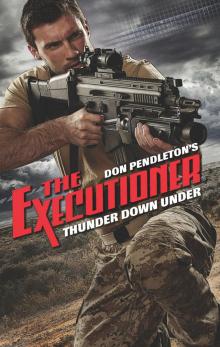 Thunder Down Under
Thunder Down Under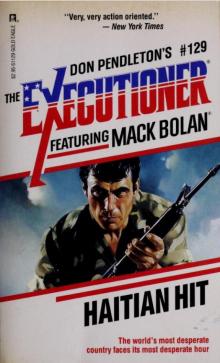 Haitian Hit
Haitian Hit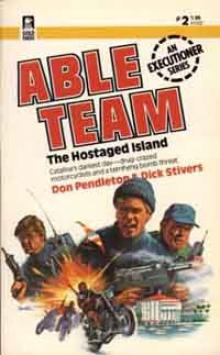 The Hostaged Island at-2
The Hostaged Island at-2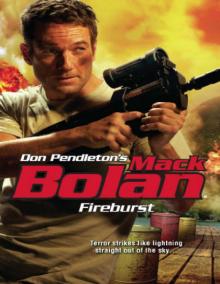 Fireburst
Fireburst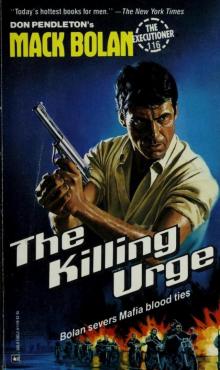 The Killing Urge
The Killing Urge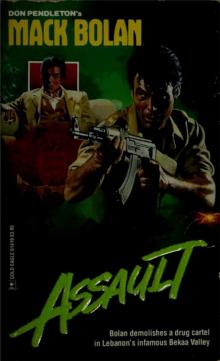 Assault
Assault Ashes To Ashes: Ashton Ford, Psychic Detective
Ashes To Ashes: Ashton Ford, Psychic Detective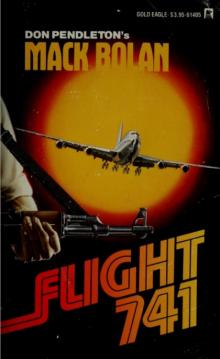 Flight 741
Flight 741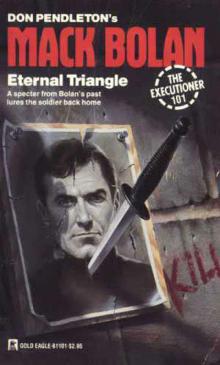 Eternal Triangle
Eternal Triangle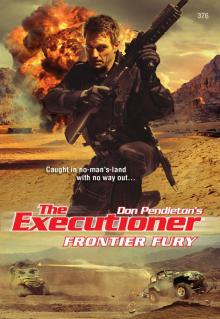 Frontier Fury
Frontier Fury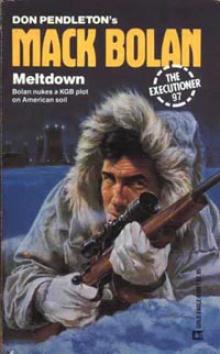 Meltdown te-97
Meltdown te-97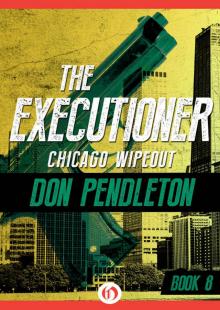 Chicago Wipeout
Chicago Wipeout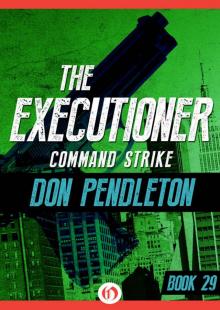 Command Strike
Command Strike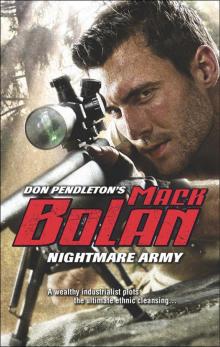 Nightmare Army
Nightmare Army Ivory Wave
Ivory Wave Combat Machines
Combat Machines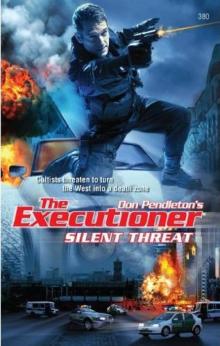 Silent Threat
Silent Threat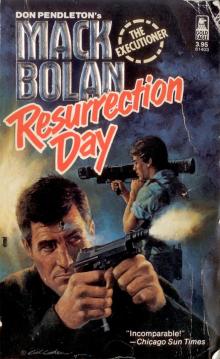 Resurrection Day
Resurrection Day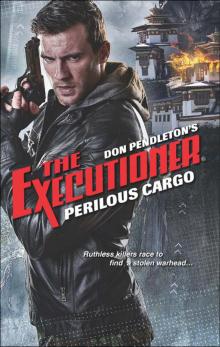 Perilous Cargo
Perilous Cargo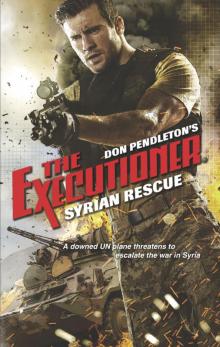 Syrian Rescue
Syrian Rescue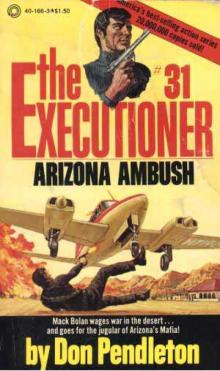 Arizona Ambush te-31
Arizona Ambush te-31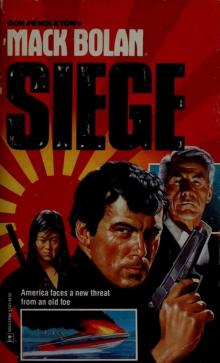 Siege
Siege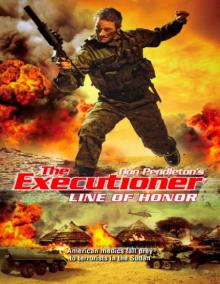 Line of Honor
Line of Honor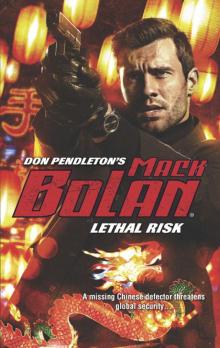 Lethal Risk
Lethal Risk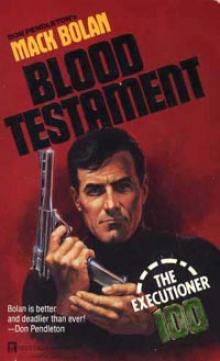 Blood Testament te-100
Blood Testament te-100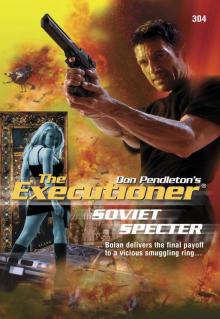 Soviet Specter
Soviet Specter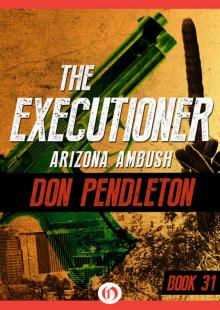 Arizona Ambush
Arizona Ambush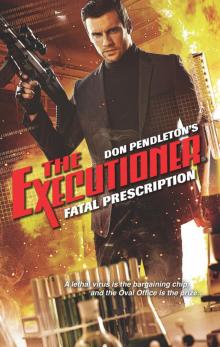 Fatal Prescription
Fatal Prescription Deep Recon
Deep Recon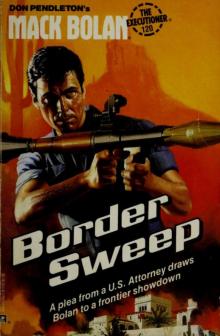 Border Sweep
Border Sweep Life to Life
Life to Life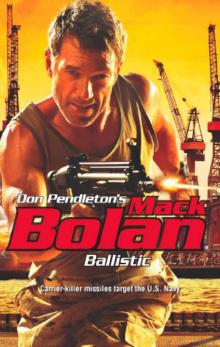 Ballistic
Ballistic Hellbinder
Hellbinder Time to Time: Ashton Ford, Psychic Detective (Ashton Ford Series Book 6)
Time to Time: Ashton Ford, Psychic Detective (Ashton Ford Series Book 6)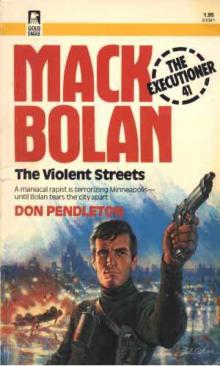 The Violent Streets te-41
The Violent Streets te-41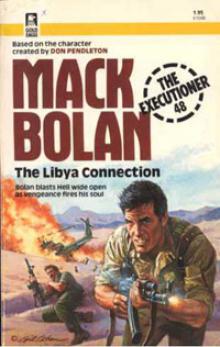 The Libya Connection te-48
The Libya Connection te-48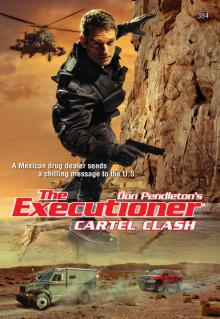 Cartel Clash
Cartel Clash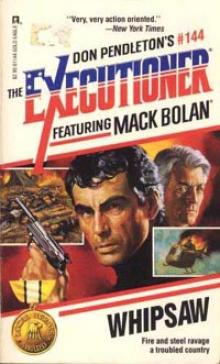 Whipsaw te-144
Whipsaw te-144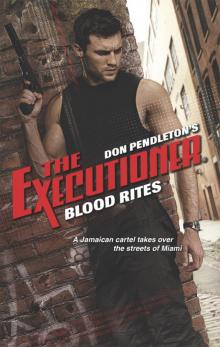 Blood Rites
Blood Rites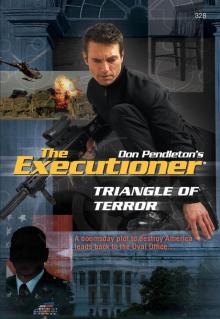 Triangle of Terror
Triangle of Terror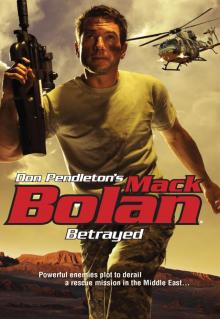 Betrayed
Betrayed San Diego Siege
San Diego Siege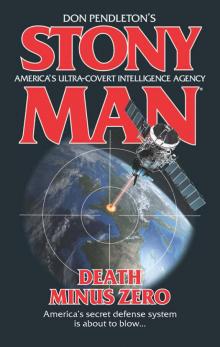 Death Minus Zero
Death Minus Zero Arctic Kill
Arctic Kill Mind to Mind: Ashton Ford, Psychic Detective
Mind to Mind: Ashton Ford, Psychic Detective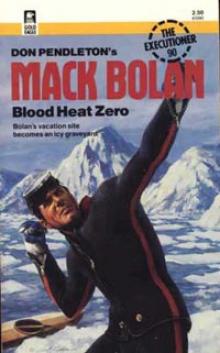 Blood Heat Zero te-90
Blood Heat Zero te-90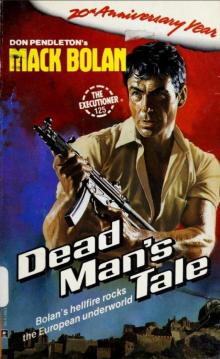 Dead Man's Tale
Dead Man's Tale Sunscream te-85
Sunscream te-85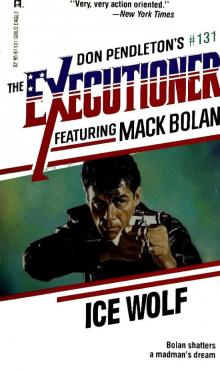 Ice Wolf
Ice Wolf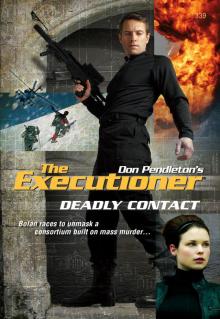 Deadly Contact
Deadly Contact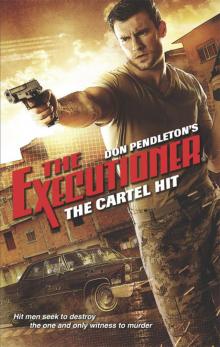 The Cartel Hit
The Cartel Hit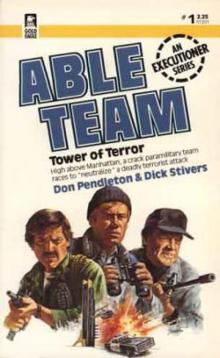 Tower of Terror at-1
Tower of Terror at-1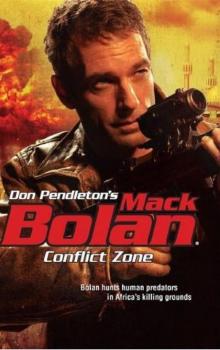 Conflict Zone
Conflict Zone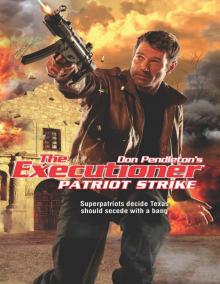 Patriot Strike
Patriot Strike Point Blank
Point Blank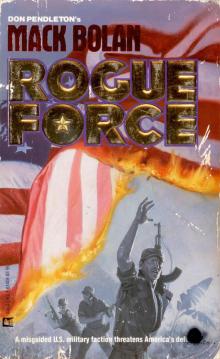 Rogue Force
Rogue Force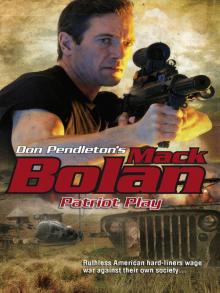 Patriot Play
Patriot Play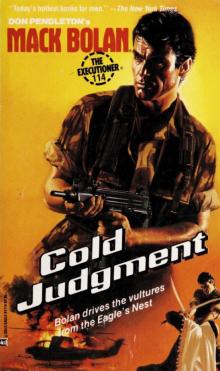 Cold Judgment
Cold Judgment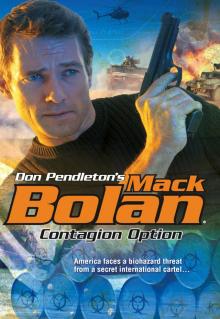 Contagion Option
Contagion Option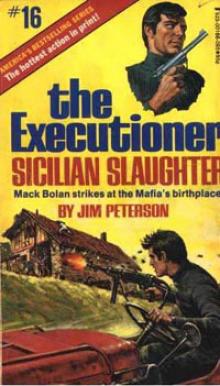 Sicilian Slaughter te-16
Sicilian Slaughter te-16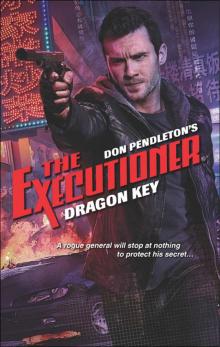 Dragon Key
Dragon Key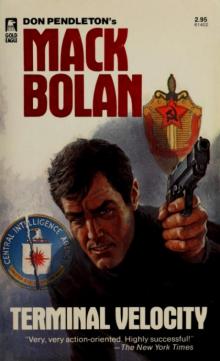 Terminal Velocity
Terminal Velocity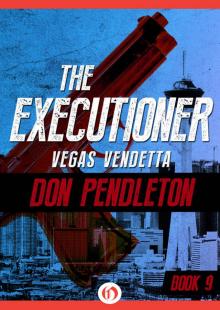 Vegas Vendetta
Vegas Vendetta Ashes To Ashes
Ashes To Ashes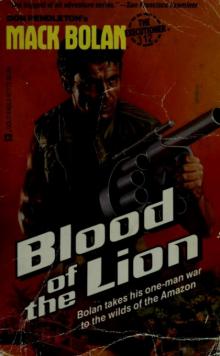 Blood of the Lion
Blood of the Lion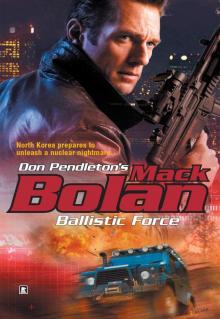 Ballistic Force
Ballistic Force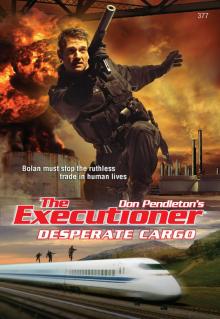 Desperate Cargo
Desperate Cargo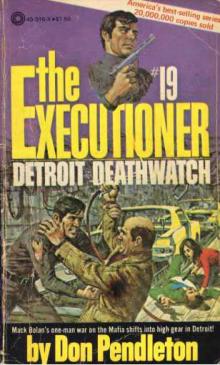 Detroit Deathwatch te-19
Detroit Deathwatch te-19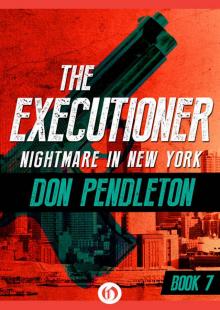 Nightmare in New York
Nightmare in New York Killpath
Killpath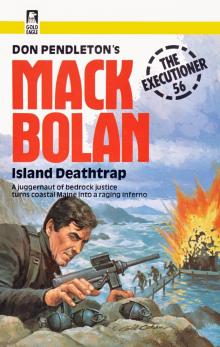 Executioner 056 - Island Deathtrap
Executioner 056 - Island Deathtrap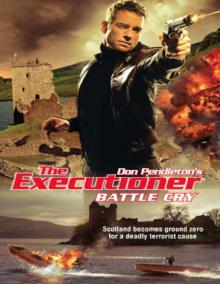 Battle Cry
Battle Cry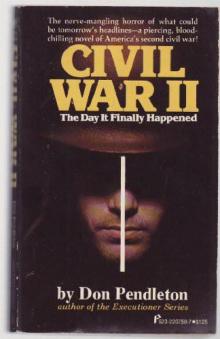 Don Pendleton - Civil War II
Don Pendleton - Civil War II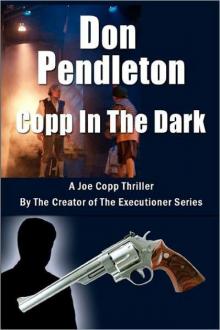 Copp In The Dark, A Joe Copp Thriller (Joe Copp Private Eye Series)
Copp In The Dark, A Joe Copp Thriller (Joe Copp Private Eye Series) China Crisis (Stony Man)
China Crisis (Stony Man)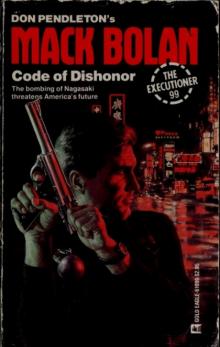 Code of Dishonor
Code of Dishonor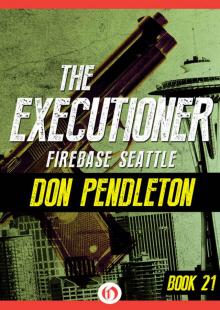 Firebase Seattle
Firebase Seattle Hard Targets
Hard Targets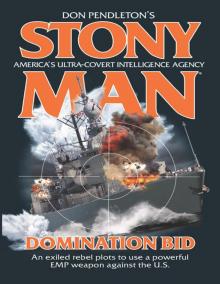 Domination Bid
Domination Bid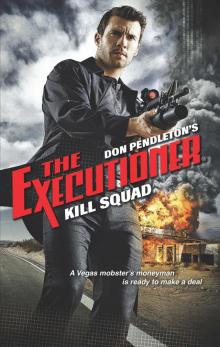 Kill Squad
Kill Squad Slayground
Slayground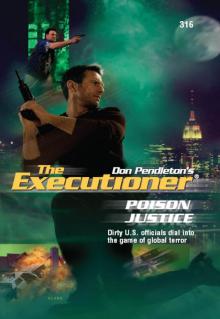 Poison Justice
Poison Justice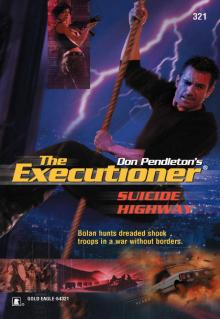 Suicide Highway
Suicide Highway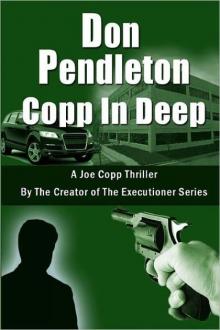 Copp In Deep, A Joe Copp Thriller (Joe Copp Private Eye Series)
Copp In Deep, A Joe Copp Thriller (Joe Copp Private Eye Series)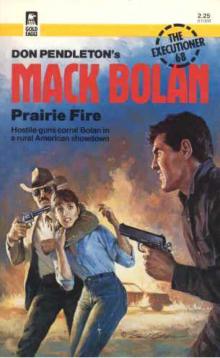 Prairie Fire
Prairie Fire Ninja Assault
Ninja Assault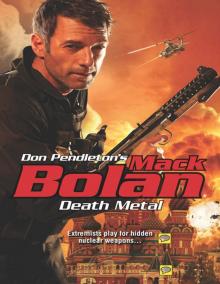 Death Metal
Death Metal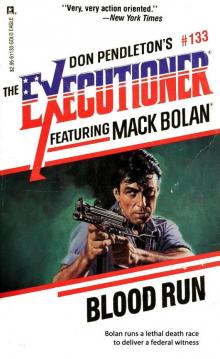 Blood Run
Blood Run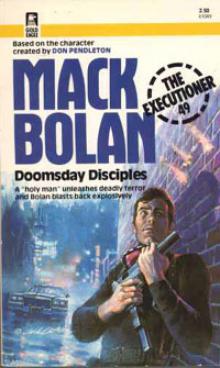 Doomsday Disciples te-49
Doomsday Disciples te-49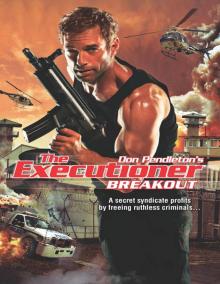 Breakout
Breakout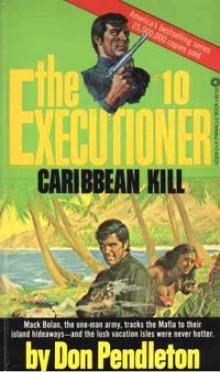 Caribbean Kill te-10
Caribbean Kill te-10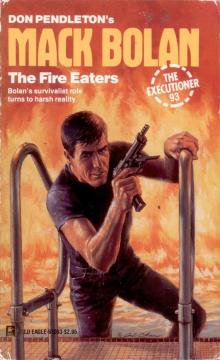 Fire Eaters
Fire Eaters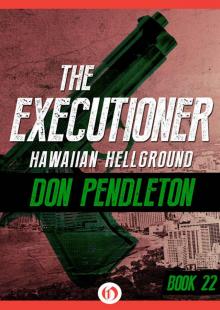 Hawaiian Hellground
Hawaiian Hellground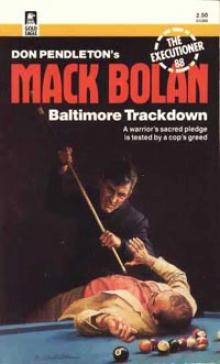 Baltimore Trackdown te-88
Baltimore Trackdown te-88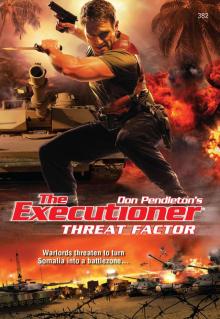 Threat Factor
Threat Factor Don Pendleton's Science Fiction Collection, 3 Books Box Set, (The Guns of Terra 10; The Godmakers; The Olympians)
Don Pendleton's Science Fiction Collection, 3 Books Box Set, (The Guns of Terra 10; The Godmakers; The Olympians)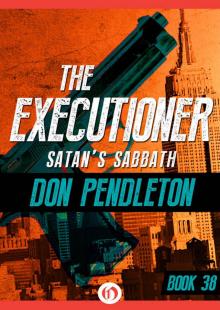 Satan’s Sabbath
Satan’s Sabbath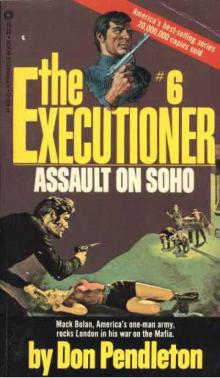 Assault on Soho te-6
Assault on Soho te-6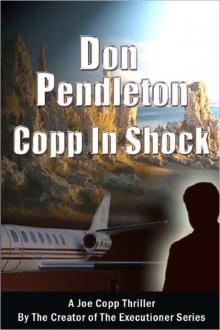 Copp In Shock, A Joe Copp Thriller (Joe Copp Private Eye Series)
Copp In Shock, A Joe Copp Thriller (Joe Copp Private Eye Series)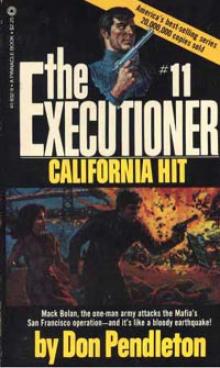 California Hit te-11
California Hit te-11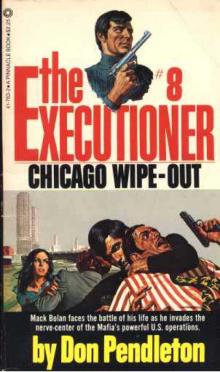 Chicago Wipe-Out te-8
Chicago Wipe-Out te-8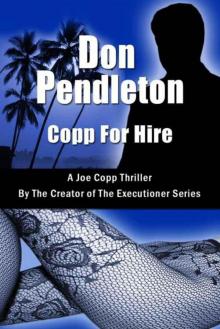 Copp For Hire, A Joe Copp Thriller (Joe Copp Private Eye Series)
Copp For Hire, A Joe Copp Thriller (Joe Copp Private Eye Series)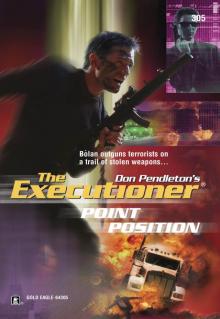 Point Position
Point Position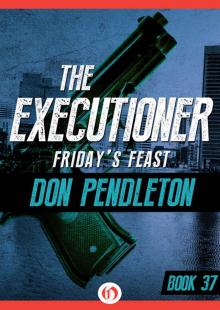 Friday’s Feast
Friday’s Feast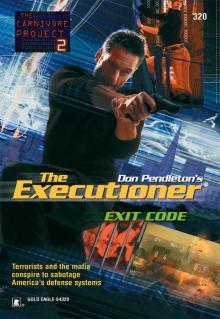 Exit Code
Exit Code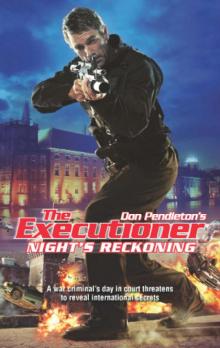 Night's Reckoning
Night's Reckoning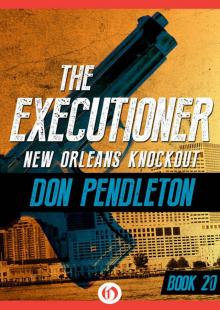 New Orleans Knockout
New Orleans Knockout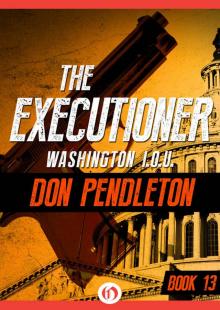 Washington I.O.U.
Washington I.O.U.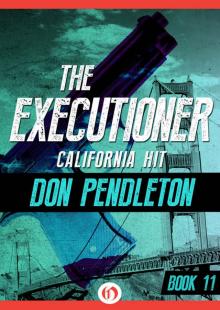 California Hit
California Hit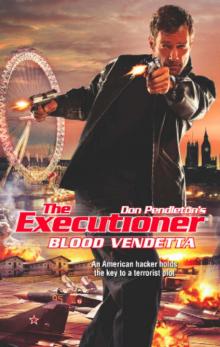 Blood Vendetta
Blood Vendetta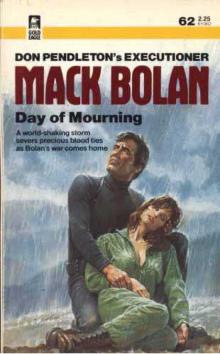 Day of Mourning te-62
Day of Mourning te-62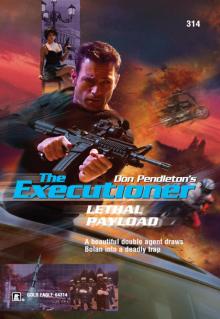 Lethal Payload
Lethal Payload Boston Blitz
Boston Blitz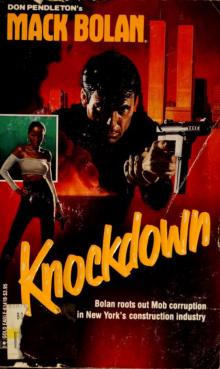 Knockdown
Knockdown Blood Sport te-46
Blood Sport te-46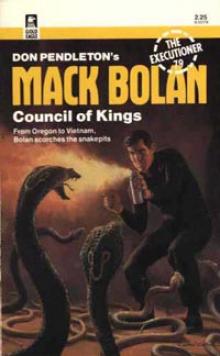 Council of Kings te-79
Council of Kings te-79 Terrorist Dispatch (Executioner)
Terrorist Dispatch (Executioner)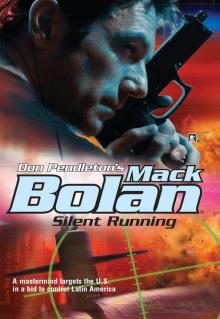 Silent Running
Silent Running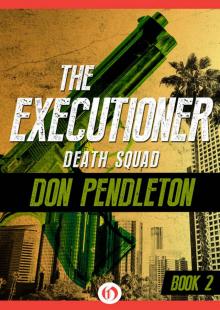 Death Squad
Death Squad Deadly Salvage
Deadly Salvage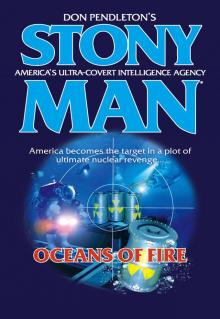 Oceans of Fire
Oceans of Fire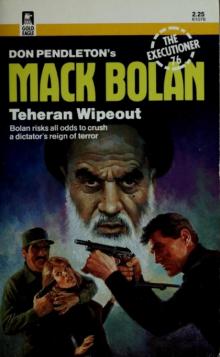 Teheran Wipeout
Teheran Wipeout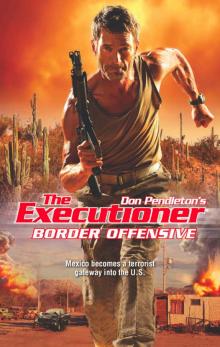 Border Offensive
Border Offensive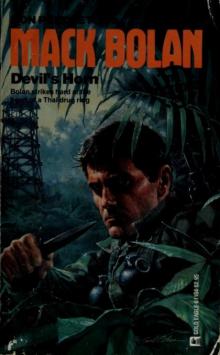 Devil's Horn
Devil's Horn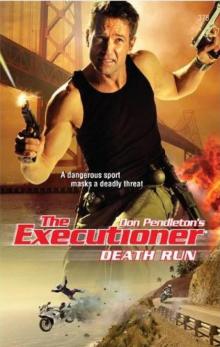 Death Run
Death Run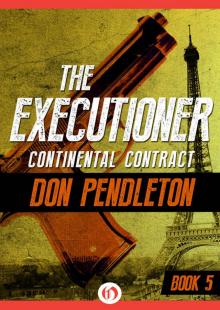 Continental Contract
Continental Contract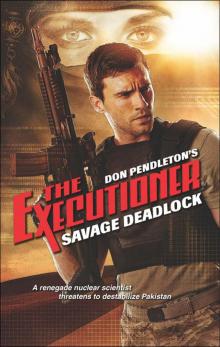 Savage Deadlock
Savage Deadlock Eye to Eye: Ashton Ford, Psychic Detective
Eye to Eye: Ashton Ford, Psychic Detective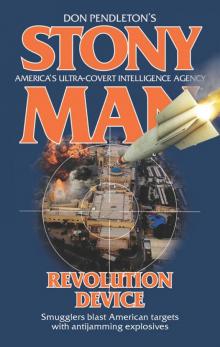 Revolution Device
Revolution Device Heart to Heart: Ashton Ford, Psychic Detective
Heart to Heart: Ashton Ford, Psychic Detective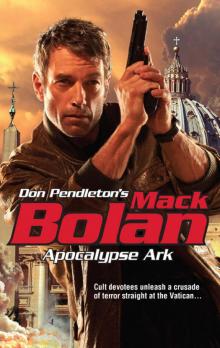 Apocalypse Ark
Apocalypse Ark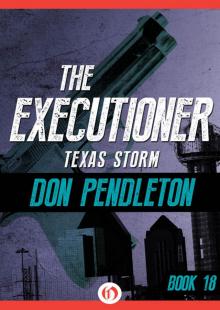 Texas Storm
Texas Storm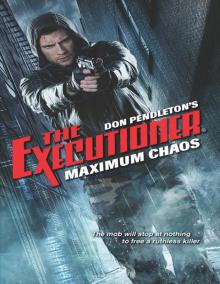 Maximum Chaos
Maximum Chaos Sensor Sweep
Sensor Sweep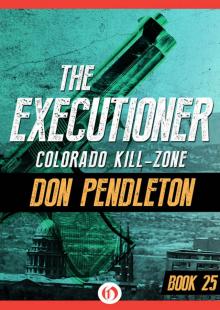 Colorado Kill-Zone
Colorado Kill-Zone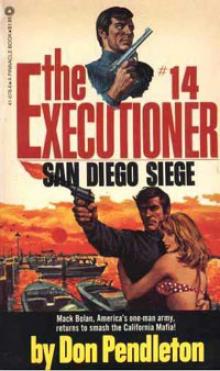 San Diego Siege te-14
San Diego Siege te-14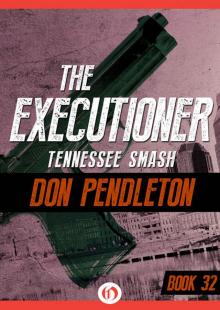 Tennessee Smash
Tennessee Smash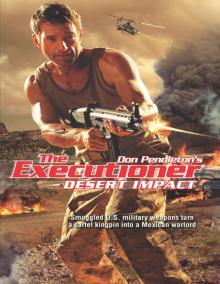 Desert Impact
Desert Impact Fire in the Sky
Fire in the Sky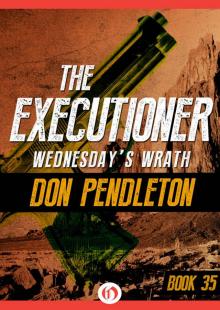 Wednesday’s Wrath
Wednesday’s Wrath Super Bolan - 001 - Stony Man Doctrine
Super Bolan - 001 - Stony Man Doctrine Chain Reaction
Chain Reaction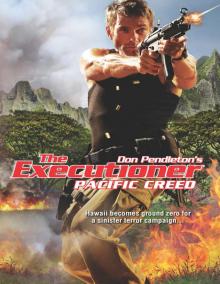 Pacific Creed
Pacific Creed Death List
Death List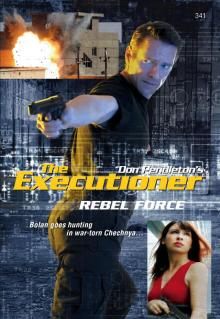 Rebel Force
Rebel Force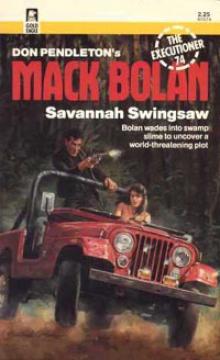 Savannah Swingsaw te-74
Savannah Swingsaw te-74 Heart to Heart
Heart to Heart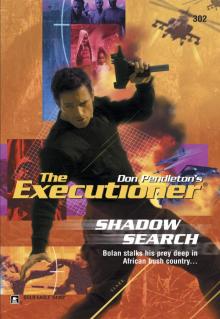 Shadow Search
Shadow Search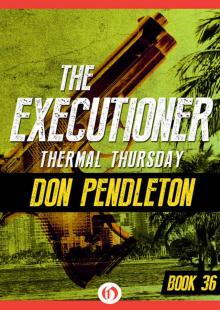 Thermal Thursday
Thermal Thursday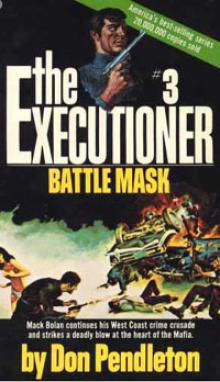 Battle Mask te-3
Battle Mask te-3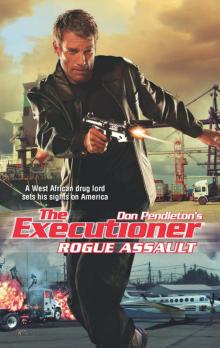 Rogue Assault
Rogue Assault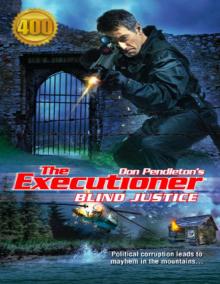 Blind Justice
Blind Justice Cold Fusion
Cold Fusion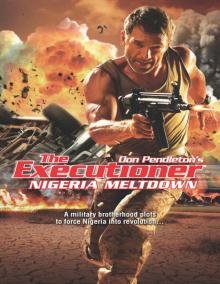 Nigeria Meltdown
Nigeria Meltdown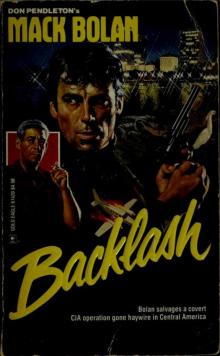 Backlash
Backlash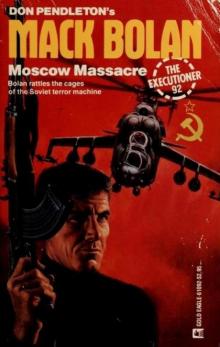 Moscow Massacre
Moscow Massacre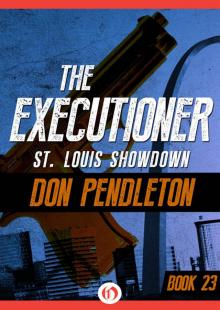 St. Louis Showdown
St. Louis Showdown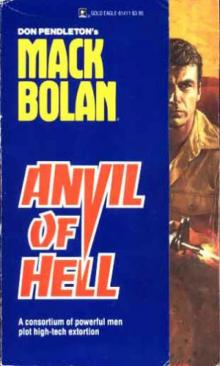 Anvil of Hell
Anvil of Hell Life to Life: Ashton Ford, Psychic Detective
Life to Life: Ashton Ford, Psychic Detective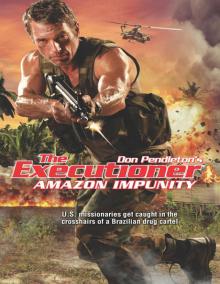 Amazon Impunity
Amazon Impunity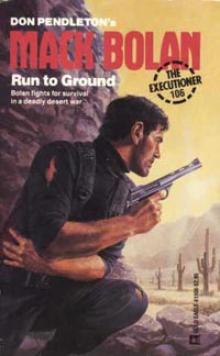 Run to Ground te-106
Run to Ground te-106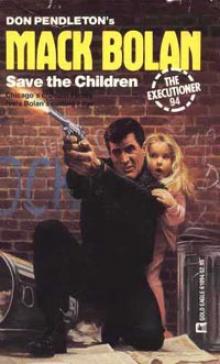 Save the Children te-94
Save the Children te-94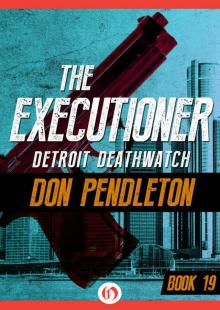 Detroit Deathwatch
Detroit Deathwatch Shadow Hunt
Shadow Hunt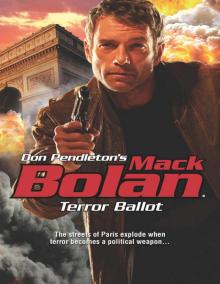 Terror Ballot
Terror Ballot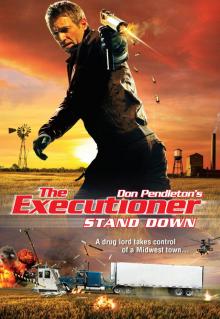 Stand Down
Stand Down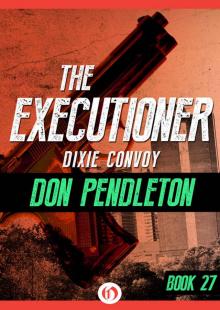 Dixie Convoy
Dixie Convoy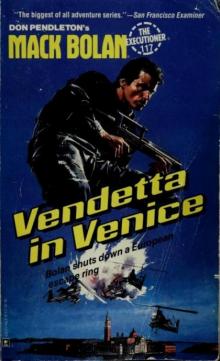 Vendetta in Venice
Vendetta in Venice War Against the Mafia
War Against the Mafia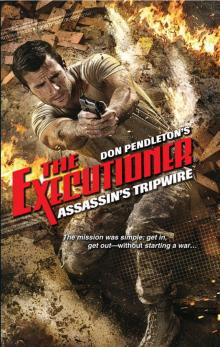 Assassin's Tripwire
Assassin's Tripwire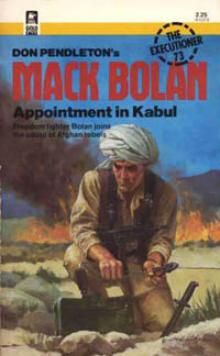 Appointment in Kabul te-73
Appointment in Kabul te-73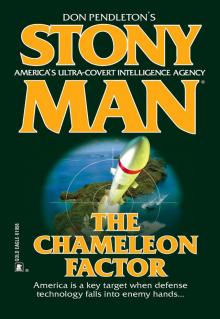 The Chameleon Factor
The Chameleon Factor Pirate Offensive
Pirate Offensive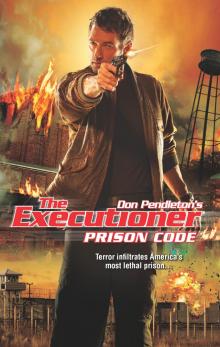 Prison Code
Prison Code Firebase Seattle te-21
Firebase Seattle te-21 Ground Zero
Ground Zero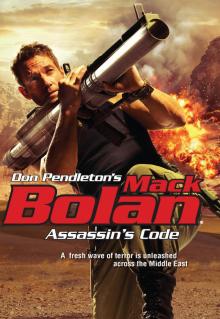 Assassin's Code
Assassin's Code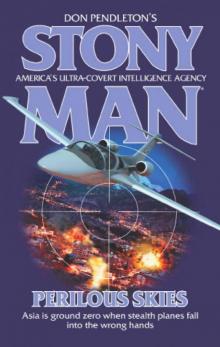 Perilous Skies (Stony Man)
Perilous Skies (Stony Man) Toxic Terrain
Toxic Terrain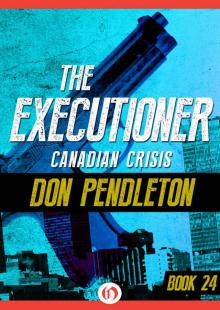 Canadian Crisis
Canadian Crisis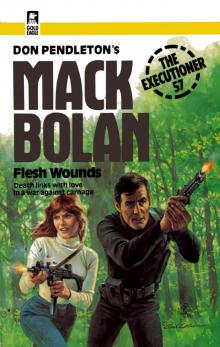 Executioner 057 - Flesh Wounds
Executioner 057 - Flesh Wounds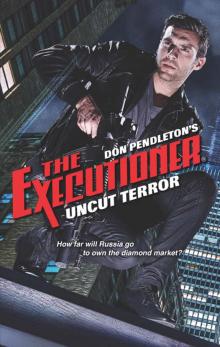 Uncut Terror
Uncut Terror War Everlasting (Superbolan)
War Everlasting (Superbolan)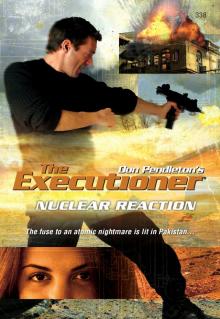 Nuclear Reaction
Nuclear Reaction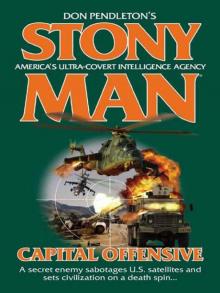 Capital Offensive (Stony Man)
Capital Offensive (Stony Man) Beirut Payback te-67
Beirut Payback te-67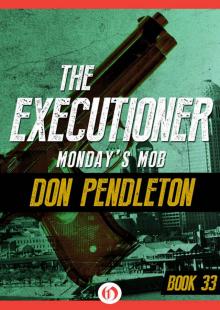 Monday’s Mob
Monday’s Mob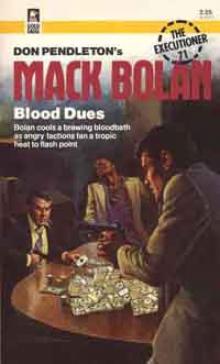 Blood Dues te-71
Blood Dues te-71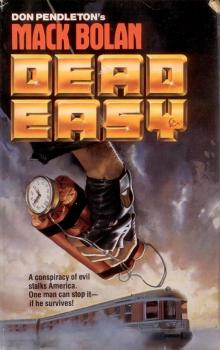 Dead Easy
Dead Easy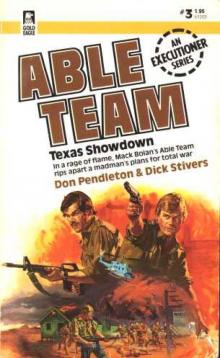 Texas Showdown at-3
Texas Showdown at-3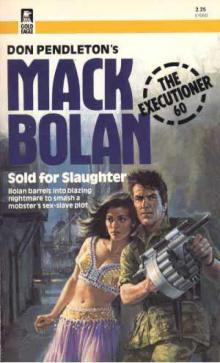 Sold for Slaughter
Sold for Slaughter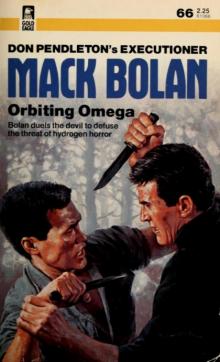 Orbiting Omega
Orbiting Omega Copp On Ice, A Joe Copp Thriller (Joe Copp Private Eye Series)
Copp On Ice, A Joe Copp Thriller (Joe Copp Private Eye Series) Rebel Blast
Rebel Blast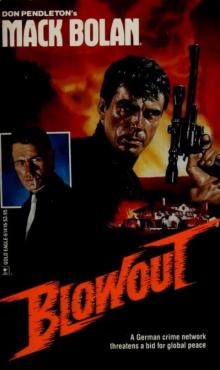 Blowout
Blowout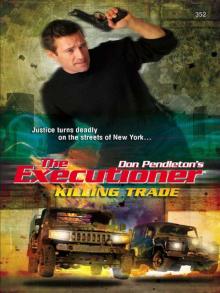 Killing Trade
Killing Trade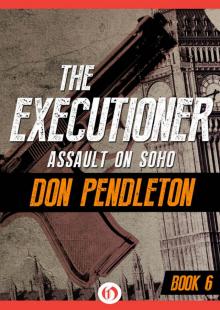 Assault on Soho
Assault on Soho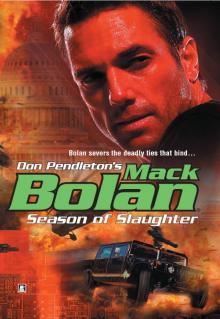 Season of Slaughter
Season of Slaughter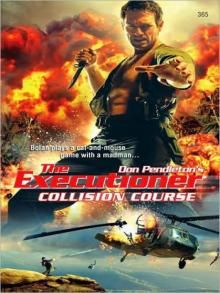 Collision Course
Collision Course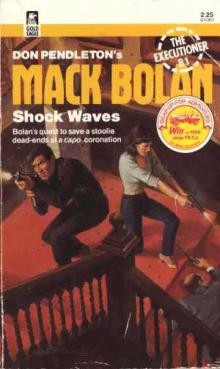 Shock Waves
Shock Waves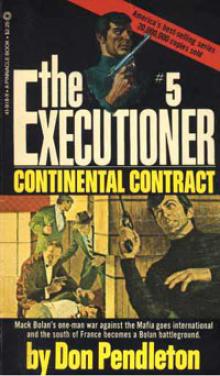 Continental Contract te-5
Continental Contract te-5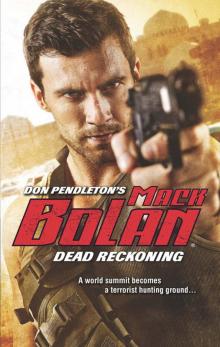 Dead Reckoning
Dead Reckoning Enemies Within
Enemies Within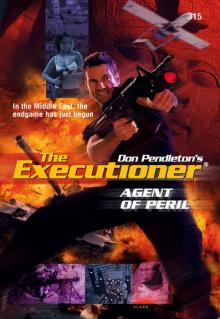 Agent of Peril
Agent of Peril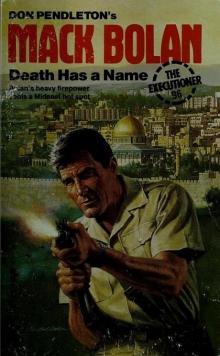 Death Has a Name
Death Has a Name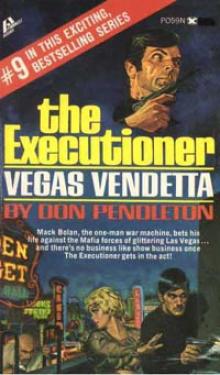 Vegas Vendetta te-9
Vegas Vendetta te-9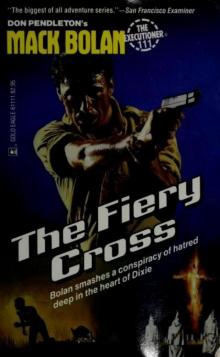 The Fiery Cross
The Fiery Cross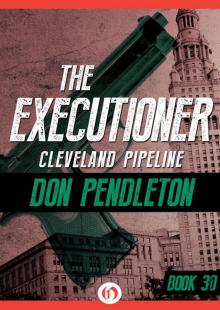 Cleveland Pipeline
Cleveland Pipeline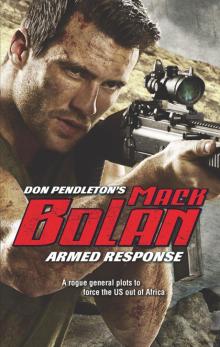 Armed Response
Armed Response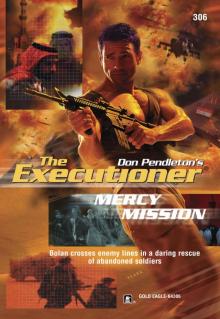 Mercy Mission
Mercy Mission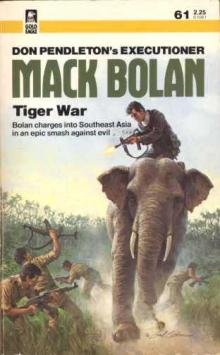 Tiger War te-61
Tiger War te-61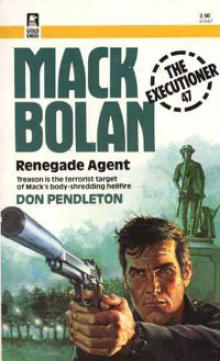 Renegade Agent te-47
Renegade Agent te-47 Damage Radius
Damage Radius Eye to Eye
Eye to Eye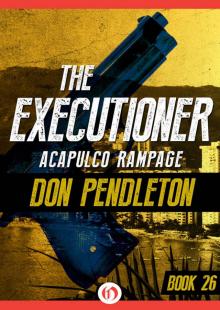 Acapulco Rampage
Acapulco Rampage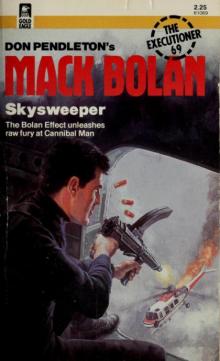 Skysweeper
Skysweeper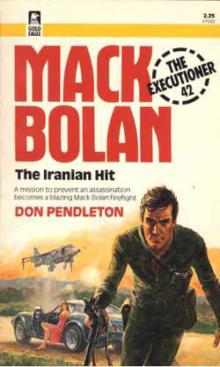 The Iranian Hit te-42
The Iranian Hit te-42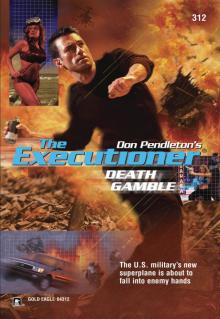 Death Gamble
Death Gamble Rebel Trade
Rebel Trade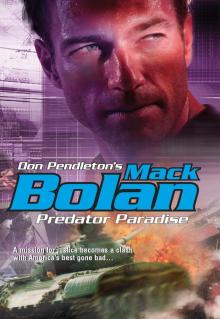 Predator Paradise
Predator Paradise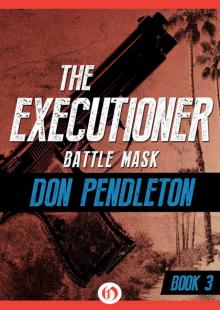 Battle Mask
Battle Mask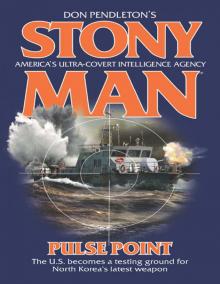 Pulse Point
Pulse Point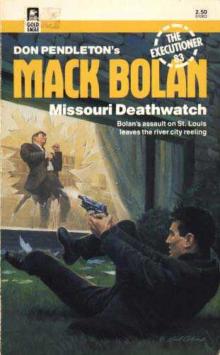 Missouri Deathwatch
Missouri Deathwatch Blood Tide
Blood Tide Missile Intercept
Missile Intercept Jersey Guns
Jersey Guns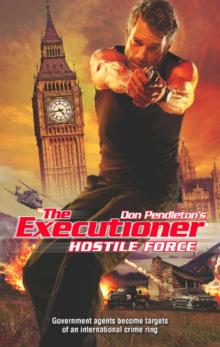 Hostile Force
Hostile Force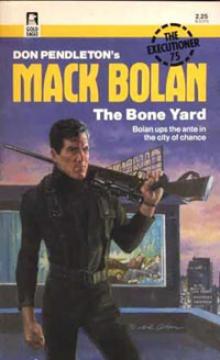 The Bone Yard te-75
The Bone Yard te-75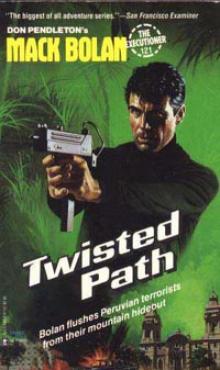 Twisted Path te-121
Twisted Path te-121 Mind to Mind
Mind to Mind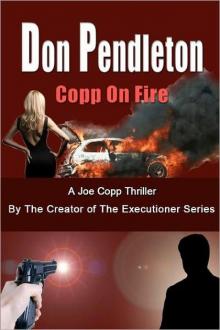 Copp On Fire, A Joe Copp Thriller (Joe Copp, Private Eye Series)
Copp On Fire, A Joe Copp Thriller (Joe Copp, Private Eye Series)